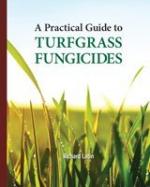|
This section contains 267 words (approx. 1 page at 300 words per page) |
Fungicides are chemicals that inhibit the growth or attack of fungi. Fungi can attack agricultural crops, garden plants, wood and wood products (dry rot in particular is a major problem), and many other items of use to humans. Fungicides usually kill the fungus that is causing the damage.Sulfur, sulfur containing compounds, organic salts of iron, and heavy metals are all used as fungicides. Other fungicide types include carbamates or thiocarbamates such as benomyl and ziram, thiozoles such as etridiazole, triazines such as anilazine, and substituted organics such as chlorothalonil. Fungacides generally have low mammalian toxicity. Many have been shown to cause cancer or reproductive toxicity in experimental animal studies.
Fungicides operate in different ways depending upon the species that they are designed to combat. Many are poisons and their application must be undertaken carefully or over application may kill other plants in the area. Some fungicides disrupt some of the metabolic pathways of fungi by inhibiting energy production or biosynthesis, and others disrupt the fungal cell wall, which is made of chitin, as opposed to the cellulose of plant cell walls. Chitin is a structural polysaccharide and is composed of chains of N- acetyl-D-glucosamine units. Each mole of chitin is made of approximately 500 N-acetyl-D-glucosamine units. Fungal pathogens come from two main groups of fungi, the ascomycetes (rusts and smuts) and the basidiomycetes (the higher fungi - mushrooms, toadstools, and bracket fungi).
Human fungal infections, such as athlete's foot, can be treated by fungicides normally referred to as antifungal agents or antimycotics. Compounds such as clotrimazole and nystatin are used to treat human fungal infections.
|
This section contains 267 words (approx. 1 page at 300 words per page) |


